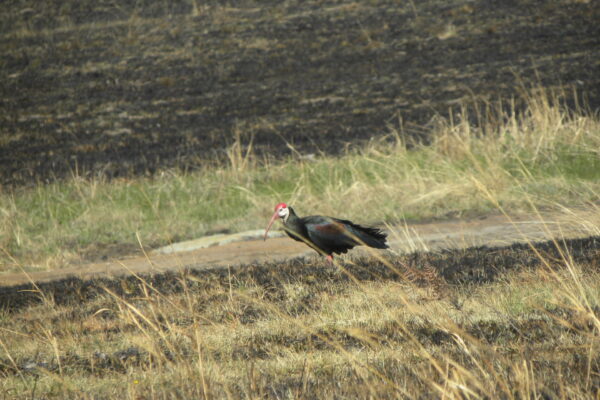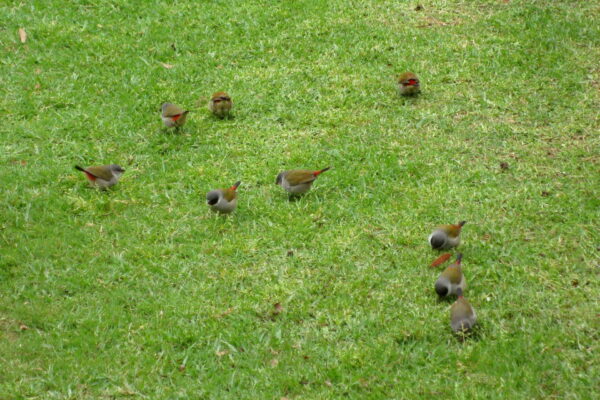September can be quiet, often windy, as it was this weekend, and still a bit early for most tropical migrants. Of the swallows only the resident Sawwing was to be found. But lots of other action nevertheless…
Hadedas don’t normally attract much attention. We see them every day, usually patrolling lawns and other short grass – including bowling greens, where they don’t enhance their popularity by roughing up the surface. But fishing? Two were standing belly deep in water, poking around on the bottom, sometimes with head completely immersed.
Much of the grassland had been burnt in the last few days. On the newest, blackest areas there were small flocks of Bald Ibis – nine in one group. This attraction to a burn is very typical, they are looking for casualties, mostly insects carbonado. Where the first shoots of green have sprouted bigger animals move in – six Eland on the high ground above Fern Forest.
It’s still winter for some of the smaller birds. Flocks of Cape White-eyes, some a dozen strong, foraged in garden trees and at the forest edge. Swee Waxbills topped that, 26 being seen in a tight group on the front lawn, eating tiny seeds around the edge where the mower missed the cut.
A beautiful night-time surprise was that finest of all bird calls, the Fiery-necked Nightjar. This is not a regular event, this bird is normally found only at lower altitudes.



What a lovely read. Enjoyed reading about all the different birds and their habits. And the eland! How they have multiplied! I am in awe. Thank you.
It is quite amazing really, Linda. Eland are definitely on the increase and the birding really is quite lovely.
Best wishes to you,
Megan